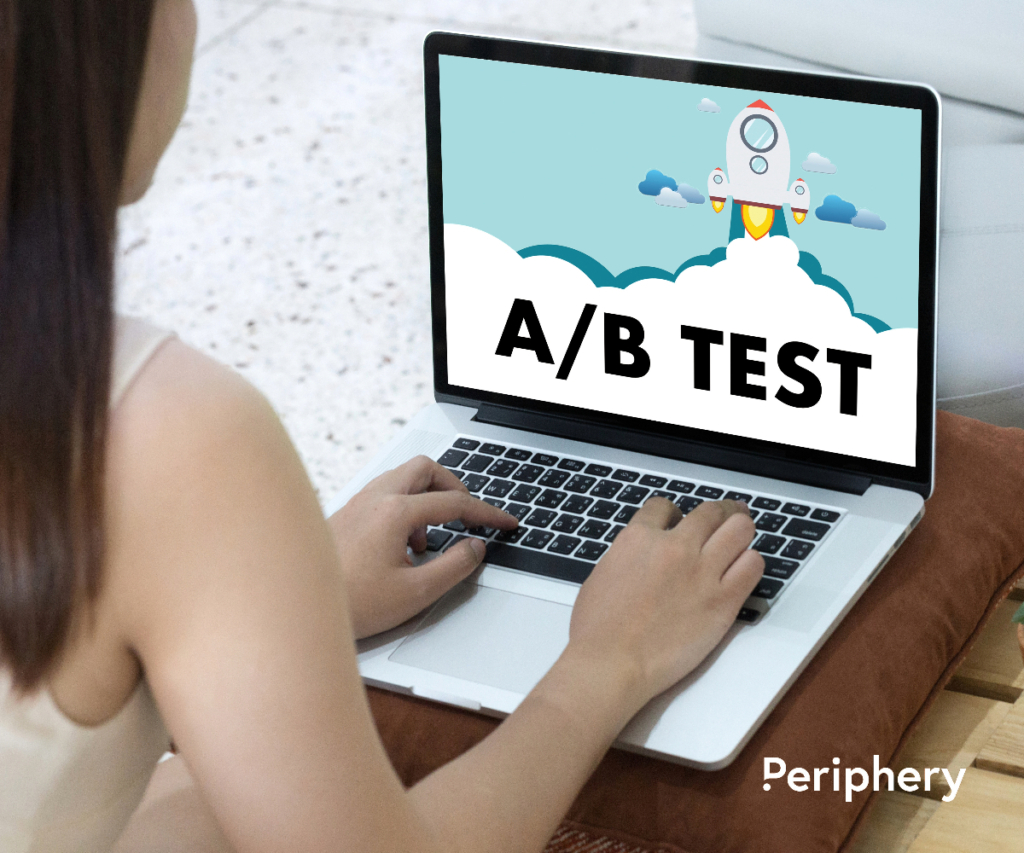Are you looking to drive growth and engagement for your business? A/B testing is a powerful tool that can help you optimize your website, app, or marketing campaigns. In this blog post, we will share some best practices for A/B testing that can help you reach a diverse, bilingual audience in English and Chinese. Following these tips can maximize your conversion rates and boost your business’s success. So, let’s discover the pivotal role of A/B testing in propelling businesses forward by mastering the techniques of “A/B Testing Best Practices: Driving Growth and Engagement”!
What is A/B Testing and How Can It Drive Growth and Engagement?
A/B testing, also known as split testing, compares two versions of a webpage, app, or marketing campaign to determine which one performs better. It involves dividing your audience into two groups, with each group being shown one of the versions. You can identify which version generates the desired outcome by tracking and analyzing user behavior, such as clicks, conversions, or engagement.

Benefits of A/B Testing for Businesses
A/B testing offers several benefits for businesses, including:
1. Data-Driven Decision Making
A/B testing allows you to make data-driven decisions by testing different variations and measuring their impact on user behavior. This eliminates guesswork and ensures your decisions are based on user preferences.
2. Optimization of User Experience
By testing different versions of your website, app, or marketing campaign, you can identify the elements that resonate best with your audience. This helps you create a tailored user experience that drives engagement and increases conversions.
3. Increased Conversion Rates
A/B testing enables you to identify the version that generates the highest conversion rates. By implementing the changes that lead to better results, you can optimize your conversion funnel and drive more sales or sign-ups.
4. Cost-Effective Marketing
A/B testing allows you to test different marketing messages or strategies without committing significant time and resources. This helps you identify the most effective marketing tactics and allocate your budget to campaigns that deliver the best results.
5. Continuous Improvement
A/B testing is an ongoing process that allows you to optimize your website, app, or marketing campaigns continuously. By regularly testing and refining different elements, you can stay ahead of the competition and ensure your business always maximizes its potential.
A/B Testing on Meta Ads, Google Ads, Creatives, and Ad Copies

A/B testing can be applied to various aspects of your business, including your website, app, creatives, and ad copies. By conducting A/B tests on these elements, you can optimize your marketing efforts and drive growth and engagement. Here are some best practices for A/B testing on Meta, Google, creatives, and ad copies:
Meta Testing
A/B testing is vital for comparing two ad versions. It changes variables like images, text, audience, or placement. Use it correctly and consistently to get desired results. These versions are presented to separate audience segments, ensuring no one sees both, and the superior performing performance is determined. Establishing a hypothesis before selecting a variable to test is crucial – for instance, predicting that a custom audience strategy will outperform an interest-based one.
To initiate an A/B test, you can duplicate an existing campaign, modify a variable, or evaluate two current campaigns or ad sets. Maintaining the same budget for both versions is advised to ensure a fair comparison. A/B testing quantifies strategy performance based on cost per result or cost per conversion lift. Unlike informal testing, like manually toggling ad sets on, and off, A/B Testing guarantees even audience division and reliable outcomes, avoiding issues like overlapping audiences and inefficient ad delivery.
Google Testing
A/B testing on Google ads is essential for maximizing your ad performance. Test different ad formats, headlines, call-to-actions, and landing pages to determine which combinations drive the highest click-through rates and conversions. By optimizing your Google ads, you can ensure that your marketing budget is being spent effectively and generating the desired results.
Creatives Testing
A/B testing creatives, such as images, videos, or infographics, is crucial for attracting and engaging your audience. Test different visuals, color schemes, messaging, or layouts to identify the ones that resonate best with your target audience. By using A/B testing to refine your creatives, you can create compelling content that captures attention and drives engagement.
Setting Goals and Objectives on A/B Testing
The importance of setting clear goals and objectives for A/B testing is crucial to ensure its effectiveness and drive growth and engagement. Here are some key reasons why setting clear goals and objectives is important:
1. Focus and Direction
Setting clear goals and objectives provides focus and direction for your A/B testing efforts. It helps you identify what you want to achieve and what metrics you will use to measure success. This clarity allows you to prioritize and allocate resources effectively.
2. Measurement and Evaluation
Clear goals and objectives enable you to accurately measure and evaluate your A/B tests’ impact. Thus, you can determine if your tests are successful and track progress over time by defining specific metrics, such as click-through, conversion, or engagement rates.
3. Alignment with Business Objectives
Setting clear goals and objectives ensures that your A/B testing efforts align with your overall business objectives. It helps you identify the areas where improvement is needed and focus your testing on those specific areas that can drive growth and engagement.
Key Metrics to Measure
When conducting A/B testing, measuring key metrics is essential to accurately evaluate your tests’ success. Here are some key metrics you should consider measuring:
1. Click-Through Rate (CTR)
This metric measures the percentage of people who click on your ad or website link compared to the total number of impressions. A high CTR indicates that your ad or website is compelling and engaging for your target audience.
2. Conversion Rate
The conversion rate measures the percentage of visitors who take the desired action on your website, such as making a purchase or filling out a form. A high conversion rate indicates that your A/B test drives user engagement and encourages desired behavior.
3. Engagement Rate
The engagement rate measures the level of interaction and involvement from your audience, such as likes, shares, comments, or time spent on your website. A high engagement rate suggests that your A/B test resonates with your audience and captivates their attention.
4. Bounce Rate
The bounce rate measures the percentage of visitors who leave your website after viewing only one page. A high bounce rate could indicate that your A/B test is not effectively engaging your audience or providing them with valuable content.
A/B Testing on Analyzing and Interpreting Results
Once you have conducted your A/B tests and collected data, it’s crucial to accurately analyze and interpret the results. Here are some best practices for analyzing and interpreting A/B test results:
1. Statistical Significance
Ensure that you have a sufficient sample size to achieve statistical significance. This means that the results of your A/B test are not due to chance but are truly reflective of user behavior. Use statistical analysis tools or consult with a data analyst to determine if your results are statistically significant.
2. Segmentation Analysis
Consider segmenting your data by different user demographics or behaviors to gain deeper insights into how different groups respond to your A/B tests. This can help you better understand your target audience and tailor your content to their specific preferences and needs.
3. Cohort Analysis
Conducting cohort analysis can help you track the long-term impact of your A/B tests on user behavior. By grouping users based on when they were exposed to your A/B test, you can analyze how their behavior changes over time and determine the lasting effects of your test.
4. Compare Multiple Metrics
To gain a thorough understanding of your A/B test’s impact, it’s imperative to analyze multiple metrics rather than relying on a single one. Comparing conversion rate, engagement rate, and bounce rate is crucial in determining whether your test positively affects various user behaviors.
A/B Testing on Iterating and Optimizing
A/B testing is an iterative process that aims to continuously optimize and improve your results. Here are some best practices for iterating and optimizing your A/B tests:
1. Build on Successful Tests
Consequently, if you find that a particular variation in your A/B test performs significantly better than others, consider building on that success by further refining and optimizing the winning variation. This can help you maximize the impact of your test and drive even better results.
2. Test New Ideas
Don’t limit yourself to testing only minor variations of your existing content. Instead, explore new ideas and concepts to test against your control group. This can help you uncover innovative strategies and approaches that can significantly improve engagement and drive growth.
3. Test on Different Platforms
It is imperative that you test your content on multiple platforms, such as social media, email marketing, and offline channels like print ads or direct mail, to ensure that you reach a diverse audience. This will enable you to identify the most impactful channels to engage your target audience and drive results.
4. Continuously Monitor and Analyze Results
A/B testing is an ongoing process, and it’s important to continuously monitor and analyze your results. Ensure to track crucial metrics, thoroughly review performance, accurately identify trends, and proficiently optimize tests for a significant improvement of results.
A/B Testing: Your Key to Effective Growth Strategies
A/B testing is a powerful strategy for driving growth and engagement. By testing different variations of your content, you can identify what resonates with your audience and make data-driven decisions to optimize your marketing efforts. Remember to follow these best practices to ensure accurate and meaningful results. And most importantly, don’t be afraid to think outside the box and test new ideas – you never know what might be the key to unlocking your business’s full potential. Start A/B testing today and watch your business thrive!
Set Up and Drive Growth through A/B Testing with Periphery!
Periphery is a leading digital marketing agency specializing in helping businesses engage diverse English and Chinese audiences. We’re A/B testing experts, optimizing your tests for growth. Our data-driven approach ensures informed decisions from meaningful results. We encourage continuous innovation, aiding in new strategy implementation. Reach wider audiences through platform-specific testing, including social media, emails, and offline channels. Our services encompass ongoing monitoring, providing performance insights for data-driven decisions. Elevate your marketing potential with us today!



